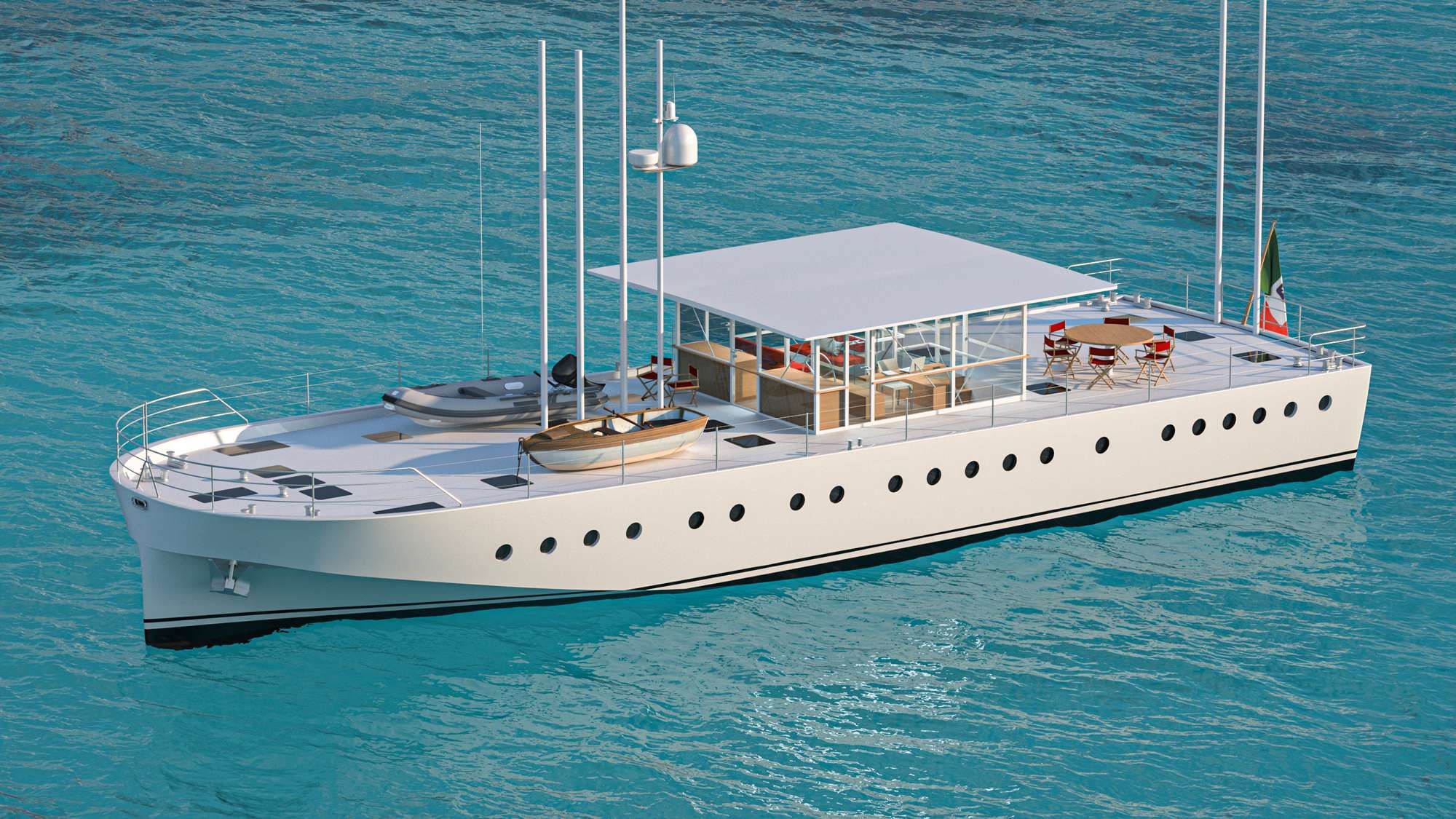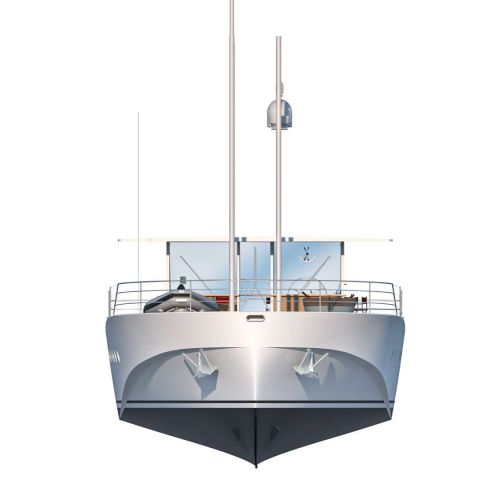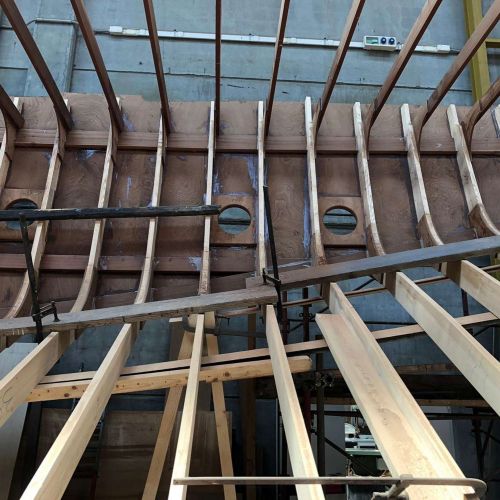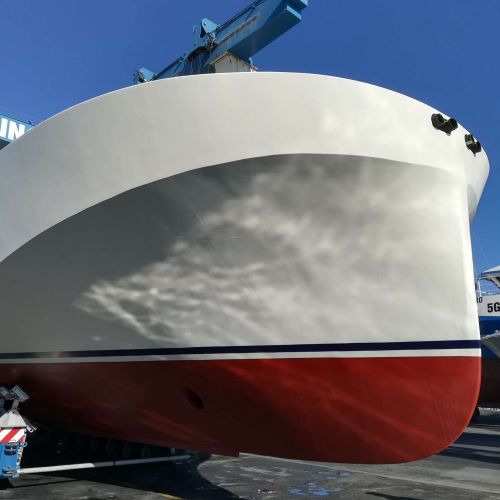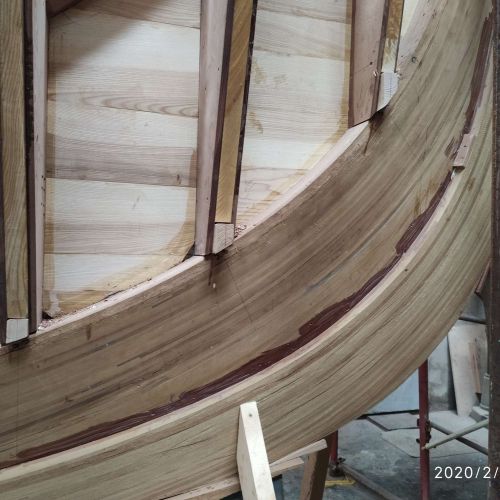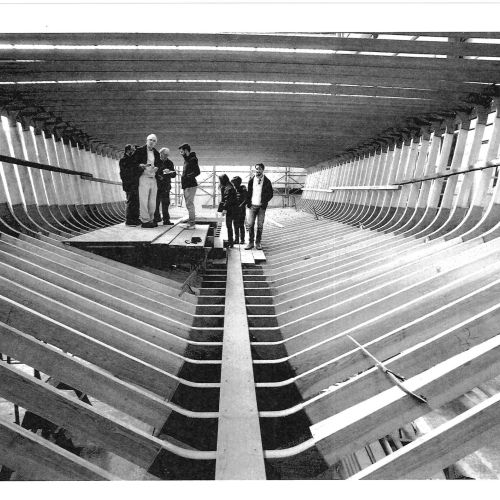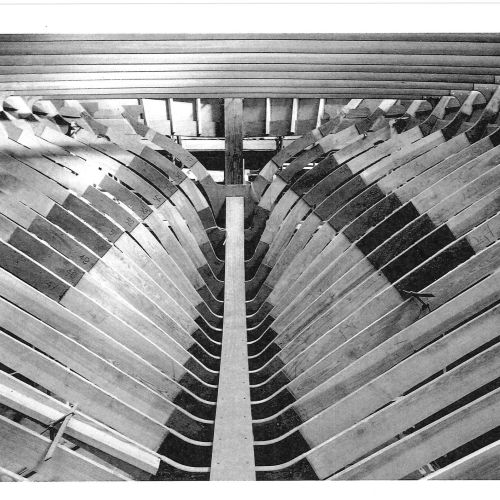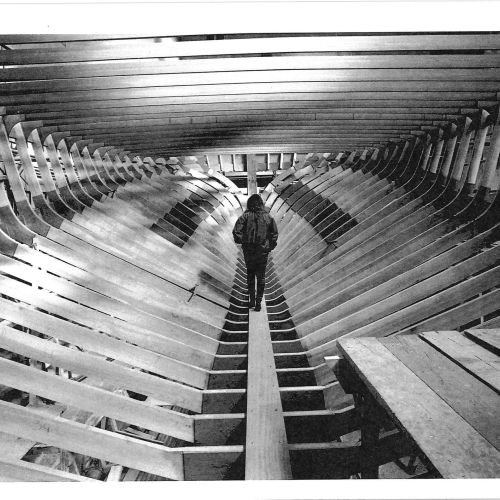M / Y Raft
Under Construction
Based on a project by Nauta Design and Francesco Rogantin from an idea by Renzo Piano and Olav Selvaag, and with the propulsion developed by Siemens Energy, the project for the new 24m Zattera currently under construction by Castagnola Yacht in Lavagna.
OUR INVOLVEMENT
Naval architecture
Engineering
PHOTO CREDITS
Castagnola yacht
Gianni Berengo Gardin
Description
Based on a project by Nauta Design and Francesco Rogantin from an idea by Renzo Piano and Olav Selvaag, and with the propulsion developed by Siemens Energy, the project for the new 24m Zattera currently under construction by Castagnola Yacht in Lavagna.
Inspired by the dream of living the sea by privileging the spiritual dimension of silence and harmony with nature, it is therefore conceived more as a "marine boat" than as a "yacht". She is a construction in wood, an ancient material that lives again, and which remains the most ecologically sustainable, but with a modern character, with an essential and original design that highlights the cleanliness and simplicity of the hull lines.
A pure, simple hull, with a low and clean freeboard and a particularly important beam.
The clean lines of the hull are emphasized by the superstructure in the shape of a glazed deckhouse, transparent and light, almost flying, which allows a direct visual relationship, without obstacles, between man and the infinite of the surrounding environment, favoring a pleasant sensation of contact with it, of lightness, of flight in nature.
Minimizing the acoustic impact on the surrounding environment was essential.
A boat that by choice of use will often live in the harbor, will have to move silently with low consumption. Follow the sound of the sea by sailing slowly: the dimension of serenity and peace at sea.
The main choices of the project derive from these ideas. First of all that of having a hull with hull lines, not necessarily aggressive, but also in their simplicity.
The relatively light boat has a displacement hull that reaches a maximum speed of 12 knots (cruising speed of 10,5 knots). It has been tested with CFD which has allowed to optimize the shapes of the bow and the stern exits, allowing an important gain in terms of lowering of the drag.
The choice of the Siemens Energy hybrid propulsion system was fundamental in order to minimize atmospheric emissions: great design and construction care was also taken to eliminate vibrations and the acoustic impact on the surrounding environment, in particular while navigating in pure electric mode guaranteed by lithium-ion batteries.
The propulsion system is powered by two 180 kW variable speed diesel generators and a 95 kWh battery pack, connected to a 700 Volts direct current distribution system, which powers both the propulsion and the other on-board utilities. .
The propulsion consists of two traditional shaft lines driven by high-torque permanent magnet motors, each with a power of 135kw.
The motors are directly connected to the shaft lines without the interposition of marine inverters to increase the efficiency of the system and further reduce the noise of the mechanical parts in rotation.
The two Diesel generators were expressly developed by Mase Generators for Siemens Energy with Volvo Penta D4-300 engines using variable speed technology with permanent magnet alternators in order to reduce consumption and emissions to a minimum.
The generators are installed on a double series of anti-vibration mounts, an uncommon solution on this size of boat, which underlines the desire to reduce the acoustic impact. For the same purpose, a lot of work has been done on the materials that make up the soundproofing box of the generators themselves, and an in-depth study has been carried out on the soundproofing of the engine room. Finally, work is underway to obtain a silent submerged exhaust system.
Several photovoltaic panels will allow an additional energy source at zero cost and impact.
The electrical balance on board has been studied in order to therefore allow an important autonomy both in propulsion and in other users.
The construction of the hull, deck and structures is carried out by the Castagnola shipyard with solid wood glued with epoxy resin loaded with silica, for better adhesion of the surfaces, and marine plywood. The particular shape of the hull required the use of a keel beam and a lamellar iroko counter-keel, of variable dimensions, which increase in the area of the bow wheel. Given the very particular shape of the bow, all the planking in this area will be made of molded wood, with five different layers of wood, arranged with crossed fibers.
All the frames are in solid ash and the planking of the bottom and sides are in marine plywood, like the deck (the latter in okoune ', to make it lighter). The structural internal bulkheads are made of wood with rubber and cork to dampen vibrations and minimize noise.
The interior layout includes the owner's cabin and two guest cabins in the bow area, and the galley, the crew area and the engine room aft, with sober style furnishings, simple and clean details, heights generous and constant.
The saloon on the lower deck is in immediate contact with the deckhouse by means of the large double transverse staircase and natural light illuminates all the interior spaces from the outside through a generous skylight, positioned above the saloon itself.
The floor was deliberately kept at the height of the waterline, that is, at the same level of the water outside the hull, as if one were walking on the water ...
Renzo Piano and Nauta Design have a strong experience linked to sailing in their past and as "sailors lent to the motor" they have provided a series of masts and shafts that will be used to embark and disembark the tenders, to hoist the awnings and the bow awnings and stern: they will therefore have precise functions, but will also be a reference to the sail, which always remains in their hearts.
Design
Deck & Interior Design
Nauta Design
Sypyyard
Castagnola Yachts
Technical Sheet
Dimensions:
Length Overall | 23,96m |
Waterline length | 23,96m |
Maximum beam | 7,20m |
Depth | 3,28m |
Draught, full load | 1,20m |
Displacement, full load | 62,65 t |
Passengers | 6 p |
Crew | 4 p |
Fuel oil capacity | Lt 5000 |
Fresh water capacity | Lt 1500 |
Black / gray water capacity | Lt 800 |
Propulsion
Main engines | 2 x SIEMENS SIMOTICS T-1FW3 135 kW @ 450 rpm |
Generators | 2 x MASE VS180 180 kWe @ 2700 |
Bow thruster | 25 kW electric |
Performances
Max speed | 12 kn |
Cruise speed | 11 kn |
